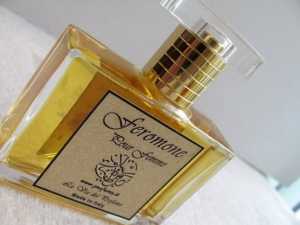Pheromones
The state of the research
by AbdesSalaam Attar
Part 2
2. State of the research on pheromones
THE STATE OF THE RESEARCH
The first identification of a pheromone took place in the Fifties by a team of German researchers who choose the silk butterfly because of the great amount of insects available in the silk worm farms. Half a million butterflies were necessary to obtain 6 mg of the active molecule, bombikol (6 thousandth of a gram). This was the quantity necessary to make the bioessay that would allow to ascertain the effect of the molecule on the behaviour of the male butterfly.
Bombikol was obtained washing with solvent the butterfly glands that produce the pheromones, then separating the various components of the pheromonal compound.
Various molecules were tested on males in the course of the bioessay and at the end it was discovered that the molecule named bombikol was responsible of the behavioural response.
The method of the pheromone research involves three steps: isolate various molecules from the compound, identify them and ascertain their effect in the course of bioessay.
Although today, with modern technologies, a single insect is sufficient for the study of its pheromonal compound, the task of the investigators is not less arduous because of difficulties inherent to this field of research, particularly when dealing with pheromones of vertebrates that are very complex.
In order to understand the puzzle in front of which researchers found themselves, be they biologist or chemist, here are some of the difficulties they have to face.
– the pheromonal compound of the vertebrates contain sometimes dozens of molecule. The effect produced is often a synergy of three or more molecules. The possible combinations to try during the bioessay grows exponentially according to the complexity of the compound isolated.
– the bioassay, to be convincing must consider numerous factors rather difficult to reproduce, like the age of the animal, the period of the year (because of the reproductive cycle), the outside environment in which the essay is made, just to name only some of them.
– then the research requires the collaboration of chemists and biologists, that have completely different modalities of work.
The first vertebrates pheromone was isolated during the Sixties. The discovery of pheromones is therefore a very recent one. This shows well the state of knowledge that we really have when we think that this chemical language recently discovered is the most ancient way of communication of all living organisms and that in the evolved forms of life it still controls in great part the reproductive function and many social behaviours.
The most important pheromones are the object of the next paragraph: they are the sexual pheromones
The sexual pheromones
A category of odorous signals produced by animals, humans included, has a sexual function. The production of these pheromones has a role in a primordial process, sexual selection.
Sexual selection has various aspects, the main ones are the choice of the partner, the competition between individuals of the same sex for the conquest of the partner and the competition to arrive first to the potential partner. All these mechanisms can be influenced by or sometimes entirely regulated by pheromonal communication.
Sexual selection is responsible for the reproductive success of the single individuals of one species and for the very survival of that species.
Considering the ubiquity of chemical signals in the animal reign, we can understand that from the studies just began on pheromones will emerge that these are the key factor in the most important mechanism of reproduction, selection of the sexual partner.
In the reproductive process, the female invests much more than the male. The effort of sperm production is not comparable with the one demanded for the maturation of the ovule up to the birth of the newborn. Therefore the female has a very limited reproductive ability while the male can transmit its genes fertilizing much more than one single female during its âreproductive seasonâ.
This biological fact is at the origin of the universal competition between males to conquer females.
Therefore females have to choose the male between their pretenders according to criteria like physical appearance, voice and smell, because all these signals give information that reveal the worth of the male.
Actually the reproductive process is a real duet of olfactory communication that begins with the female that publicizes with her smell the willingness to mate and the state of ovulation. This pheromone stimulates both the sexual behaviour of the male and in some species also its production of sperm.
The sexual behaviour of the male comprises the production of pheromones that have the functions to communicate to the female information that will help her in the choice of the partner: state of health, sexual maturity, genetic compatibility and also the rank in the social hierarchy of the group. Often dominant males produce a pheromone that identifies them as such and it is not impossible that this, in a certain measure, is also the case also in the human specie.
Pheromone of the dominant male preferred by females and, in some species, they also acts on the other males of the group inhibiting their sexual behaviour.
An example that illustrates this well is the one of red snake. The female getting out of the lair in spring is immediately surrounded by a hundred of males attracted by her scent (a pheromone). In the tangle that follows, males try to couple with the female. As soon as one of these succeeds, he releases a pheromones that makes all others disperse quickly.
Many sea animals as the curl or the sea worm depends entirely on a pheromonal duet for the success of reproduction. Chemical signals coordinate the production and the maturation of eggs and sperm and their release in the ocean.
For many species of vertebrates the initial role of pheromones in the reproductive process begins with determining the choice of the partner and we cannot discard the hypothesis that this is not valid in some measure also for our own specie.
In nature, the pheromonal scent of the male not only identifies it, but it reveals its intrinsic value: its genetic compatibility, its state of health, its diet, its state of sexual maturity and also sometimes its social rank inside the group. These information will allow females to choose the most appropriate partner between its pretenders.
For many vertebrates, the production of these pheromones is directly related to the level of androgens hormones present in the blood, like testosterone, because these are the hormones that stimulate the glands manufacturer of pheromones. The pheromonal intensity of the male is also a criterion of important evaluation in the choice of the partner. The females of the âelephant butterflyâ for example prefer males that produce a superior amount of pheromones.
 Continue..
REST OF THE REPORT ON PHEROMONES:
















